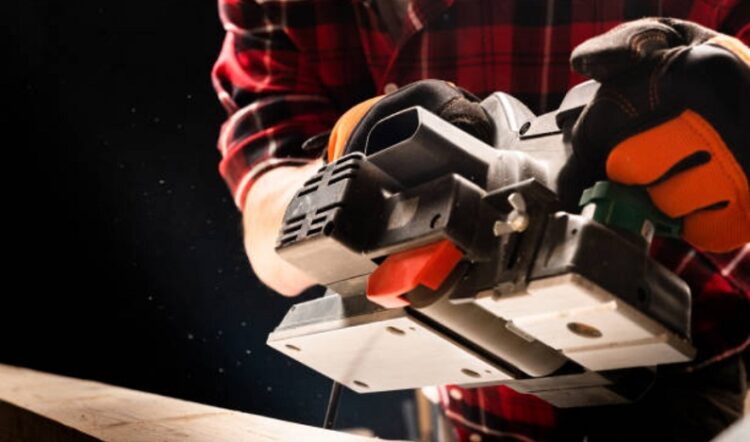Pre-Sanding Inspection
It helps to take a critical look at your belt sander before you actually start using it on any surface, regardless of it being a simple table or a wide floor space. Carefully position the belt sander so you see the underbelly of the machine, and check to see that there are no tears or cuts on the drum. This is important if you do not want to make any permanent damage on the flooring.
While you’re checking, have a close look at the wheels or the rollers, and make sure that they aren’t bumpy. At any rate, your goal is just to make sure that the wheels are clean and without any gunk from the last job you used the belt sander on. Resist the temptation to use cleaning liquids and solvents to clean these wheels quickly – you may end up doing damage to the entire machine. Instead, scrape the wheels clean easily by holding an appropriate tool against the wheels, turning the wheels gently to remove any buildups and additional contamination.
What direction does the sander use?
- Does your belt sander go to from left to right, or vice versa? You ought to make sure that you sand in the same direction of the roller that is placed nearest the sanding drum. This is usually the roller directly at the back of the said drum. This way, the sanding material on the drum would do its job in flattening the material of your floor before the entire wheel actually goes on it, resulting in a higher quality finish, a floor which is flatter and definitely cleaner. On the other hand, if you go the opposite direction, you are sure to have your wheels dealing with uneven and unclean floor material each and every time, and you would ultimately end up with a floor which is definitely less level.
- As you continue to inspect your belt sander,
Check to make sure that the actual drive belts are free of any dirt and other imperfections
- These particles can find their way into the drum of your belt sander, and ultimately into the floor, which would result once again in a less level floor. Belts could heat up with continuous use, so it is advisable to loosen the lock that holds the belts tightly when you rest in between longer jobs to avoid warping and kinking. After your break, make sure you not only lock the belts to tighten them, but also run the sander on its own for a minute or two before placing it back on the floor.
Using The Belt Sander On The Floor
- Though you can always push the sanding belt onto your belt sander, an easier and more proper way to install it is just to rotate its drum on its own, and the belt would snap into place eventually. Make a mark on the outside area of the sander with a high-contrast tape, closer to where the drum is, just so you are aware of what location the belt is cutting.
- After completing your inspection of the belt sander, it’s time to take a look at the floor. Make sure that it is as clean as possible, and double check to see that there are no nails or similar tough metal objects lying about. These things cause sparks upon contact with the belt sander, and if the floor isn’t damaged you can definitely be sure that the drum would contract some permanent damage.
- Using the belt sander isn’t as intimidating as most novices would claim. Before doing any actual sanding, wear some earplugs. Then, you may want to turn the sander on to check how the belt is tracking. If that checks out, check to make sure that the drum is at an optimal tension level. If you are using rougher and courser belts, then you should keep the tension on the belt on a higher level, as the drum is adjusted to be placed lower. Reduce pressure and tension on the drum as you use finer and smoother grit belts.
Be sure to establish and maintain a reliable grip on your sander before starting it to place it on the floor. This is one power tool that can pull you as an excited guard dog on a leash would, and if you aren’t ready, this could lead to damage and/or injury. If you want to avoid leaving unsightly drum marks on the floor, make sure that it doesn’t touch the floor at any time, unless you see that the sander is still moving. This may not be necessarily avoided at all times; when you do make a drum mark, sand at an angle, and go through the mark with a few passes, to spread the gouge around evenly. This may take some practice, but the more you do it, the better you get at it, and the better your floor will look eventually.
It is advisable to sand more than half of a given floor going one direction, and then going the other direction to cover the rest of the floor. This way, there are no visible indicators as to where you started and ended the entire sanding job.

